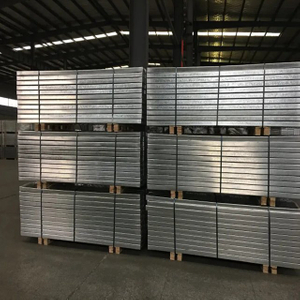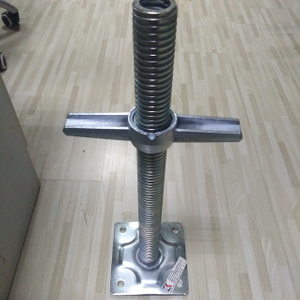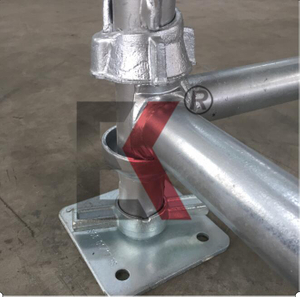What is Scaffolding?
While the term formwork is generally used for all temporary works for holding concrete, etc.
The term scaffolding is generally used for the temporary structure used to support the concrete formwork or more popularly for supporting the workmen during the construction (of brickwork, plastering, and painting or renewal or repainting of structures, etc.).
It comes under safety regulations on construction sites, and standards have been prescribed for its layout and use.
For example: when a person is liable to fall from more than 2 meters height, a guardrail should be provided to a height of 1 meter and also a toe board at least 200 mm above the platform.
Scaffolding is built around the periphery of the building, and in multistory buildings, it has to be assembled to very large heights.
As about 35 to 40 percent of all the accidents that take place in building construction sites is due to faulty scaffolding and consequent fall of persons from heights, strict supervision should be taken in putting up of scaffolding according to standard practices.
Scaffolding Parts.
Scaffolding contains the following parts.
1. Standards: The vertical posts (also called uprights).
2. Ledgers: The horizontal members parallel to the wall.
3. Braces: The bracing system.
4. Putlogs: Horizontal members normal to the wall.
5. Transoms: Putlogs whose both ends are supported on ledgers in double scaffolding.
6. Bridle: Member used to bridge openings.
7. Boarding: Planks on which workmen stand.
8. Guard rail: Rail provided at about 1 m level to guard the men working on the boarding.
9. Toe board: Boards placed parallel to boarding near the wall to give protection to workers.
10. Base plate or sole plate: Plates on the ground supporting standards.
Scaffolding Types.
Some of the commonly types of scaffolding are described below:
1. Single scaffolding or bricklayers scaffolding.
This type of scaffolding is mostly used for brickwork and consists of an outer row of verticals (called standards) to which longitudinal members are tied at different levels of working.
The cross members (putlogs) are tied to the standards at the outer end and rest on the walls being built inside. The platform is carried on the putlogs.
If the putlog level coincides with an opening in the wall, it cannot be placed on the wall. Hence, it should rest on a cross piece (called bridle tube) tied at the wall end of the adjacent putlogs.
Cross bracing in the vertical planes between the verticals are also to be introduced for lateral stability.
Where the verticals posts cannot be placed on base plates or in holes made in the ground, it should be suitably placed and braced for lateral stability.
A popular method in such cases is to place the vertical post in a steel barrel of 60 cm in height and of suitable diameter filled with compacted earth.
2. Double scaffolding or Mason’s scaffolding.
This is a supporting system used by masons for plastering. It has pairs of (inner and outer) verticals. The putlogs, instead of being supported on the wall, are supported on an inner system of verticals and longitudinal’s.
To give additional lateral stability to the narrow and tall framework, it is tied to the building at intervals when used for multistory building. ##See Fig. 11.5(a) – below.
3. Cantilever or needle scaffolding.
For the construction of the upper part of a tall residential building, cantilever scaffolding eliminates unwanted scaffolding at lower levels keeping the space free for vehicles, etc.
It is similar to the double scaffold, except that it is supported at the bottom by a cantilever prop. ##See Figure 11.5(b) – below.
4. Birdscage scaffolding.
It is used for internal work and consists of a simple cage supported on four verticals from which the workers can work.
It is movable and can be easily moved from place to place.
5. Ladder or trestle scaffolding.
This is used for light work and is usually portable. It consists of two ladders with the top ends joined together by planks so that a person can work on this platform.
6. Suspended scaffolding.
In tall buildings for working at high levels, such as the painting of tall buildings, it is more convenient and economical to suspend the working platform from above the ground than to support it from the ground.
This is especially so when the height is more than 30 meters.
Suspended scaffolds are of three types—fixed, operated by pulleys and operated by winches.
(Provision for stability should be provided for these when using them in places subjected to heavy wind forces).
(i) Fixed type suspended scaffolds.
These are the scaffolds attached to a truss or the roof truss above the site of work using ropes, chains, tubes, etc.
(ii) Suspended scaffolds operated by pulleys, etc.
These are like the platforms of the window cleaners and painters of buildings.
(iii) Suspended scaffolds operated by winches.
These arc heavy platforms hung by wires from temporary outriggers and operated by external cranes.














